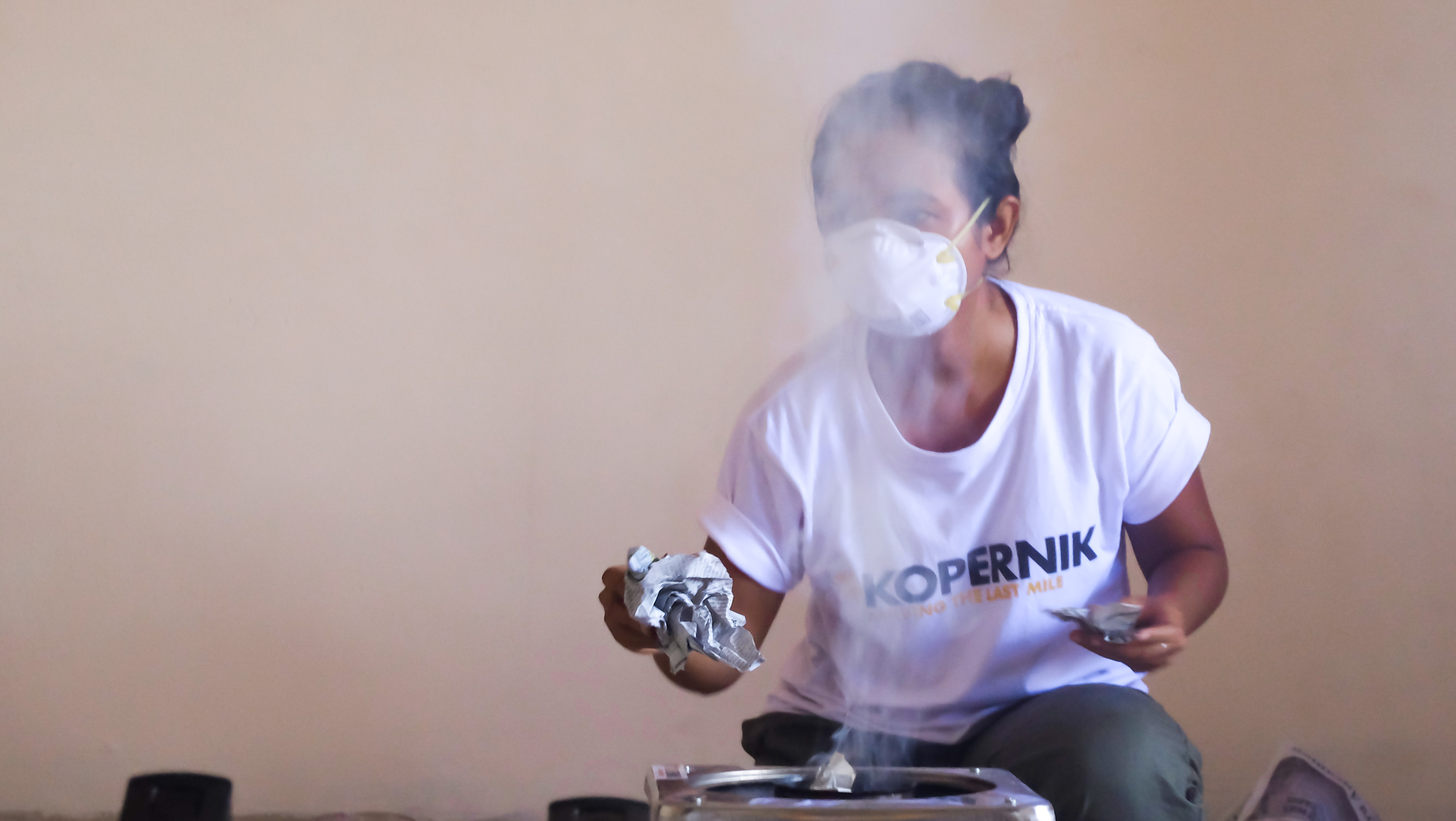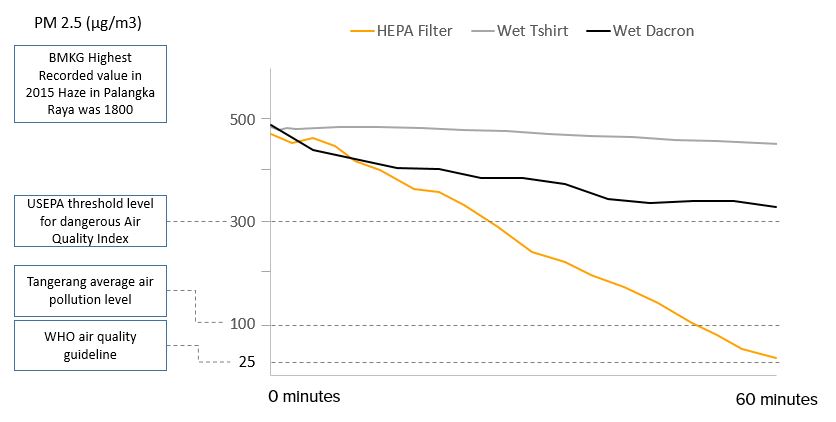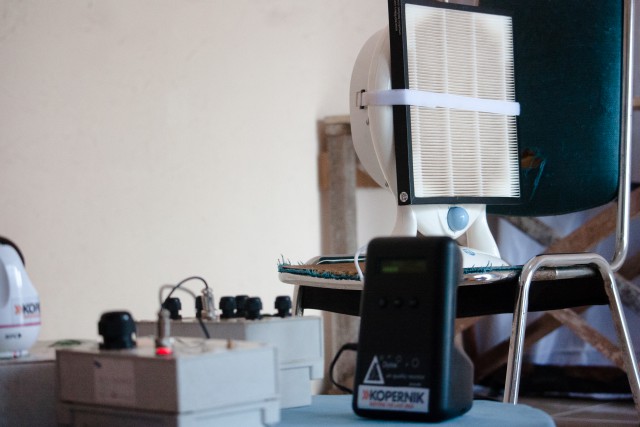
Over a period of three months in 2015, peat and forest fires - primarily the result of illegal slash and burn practices in Sumatra and Kalimantan1- caused severe haze pollution across South East Asia and affected over 43 million people in Indonesia.2 In addition to toxic gases emitted by the fires, particulate matter (PM) is widely understood to be directly responsible for acute respiratory problems and is increasingly linked to early mortality from heart and lung disease.3
To mitigate this problem, air purifiers can be used, although they tend to be prohibitively expensive. The populations in the areas affected by the haze typically do not have access to such purifiers and must therefore implement their own methods to cope with toxic air inside their homes. Based on the data collected in field interviews, the most common “haze-hacks” include stuffing wet dacron - a polyester cushion, over the windows or openings of a home,4 or covering a fan with a wet t-shirt, or similar.
Kopernik tested the effectiveness of a self-assembled Fan and HEPA Filter Unit (FFU) against several commonly used haze-hack measures for removing indoor PM. The experiments demonstrated that the FFU reduced nearly three-times the particulate matter than the haze-hack alternatives. The FFU reduced 93% of PM2.55 while wet dacron and wet t-shirts reduced 33%6 and 7% respectively.
Although the fan filter unit demonstrated to be the most effective solution, it is currently not available in Indonesia. With a retail price starting at US$35 plus up to US$40 in shipping costs from China and a one month delivery waiting time - this makes access to the FFU prohibitively expensive and complex for the affected households. Until the FFUs are produced and available locally, it may be necessary for government and development organizations to provide subsidized FFUs to affected households in an effort to reduce the haze exposure and protect the health of millions of people.
For more information about the low-cost air purifier testing and recommendations, read the full report here.
Has your organization found a similarly effective method of reducing indoor pollution using locally available “hacks”?
2 10 orang tewas, 503 ribu jiwa ispa dan 43 juta jiwa terpapar asap
3 How unhealthy is the haze from indonesias annual peat fires
4 Method suggested by Palangka Raya’s health agency for reducing indoor pollution in classroom
5 This test is for PM2.5 (particulate matter with average diameter size of 2.5micron)
6 The test results for the wet dacron experiments originate from Surefilter, an Indonesia-based company that manufactures filters for the automobile market.




